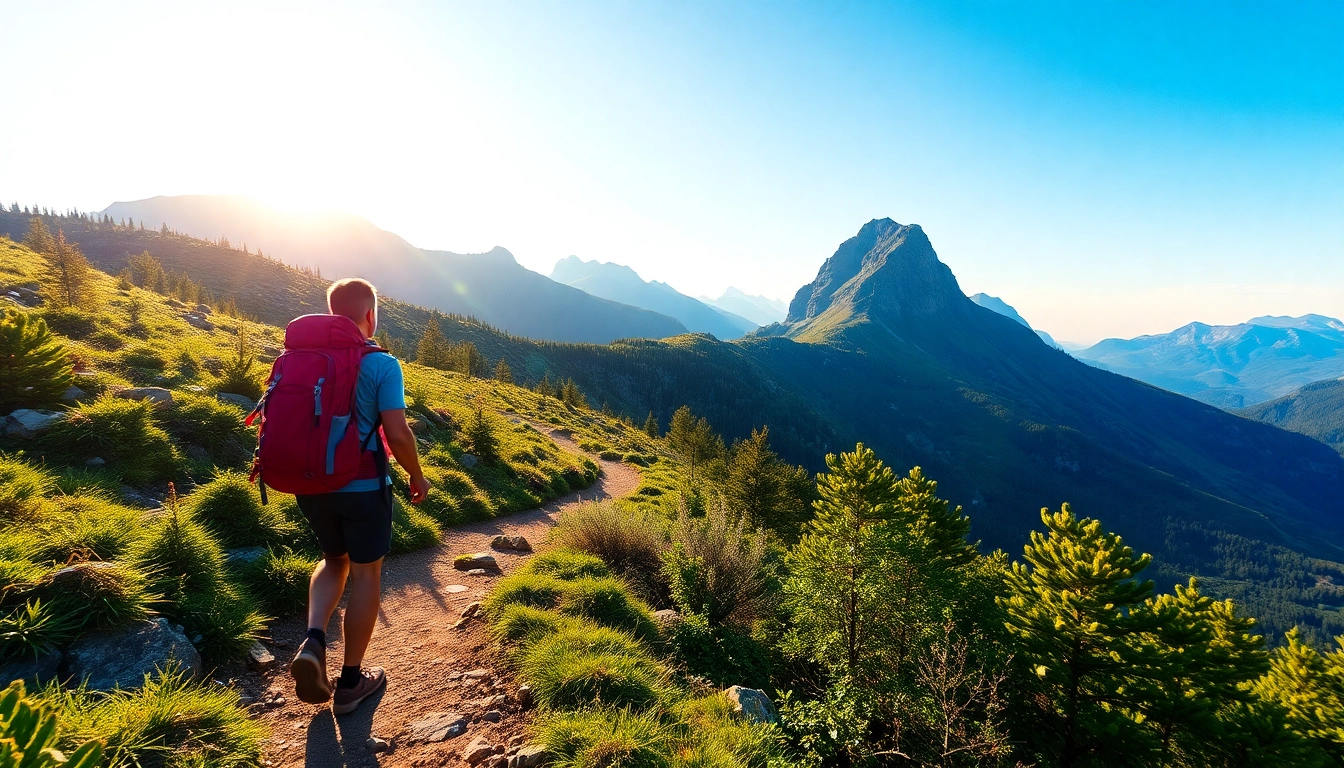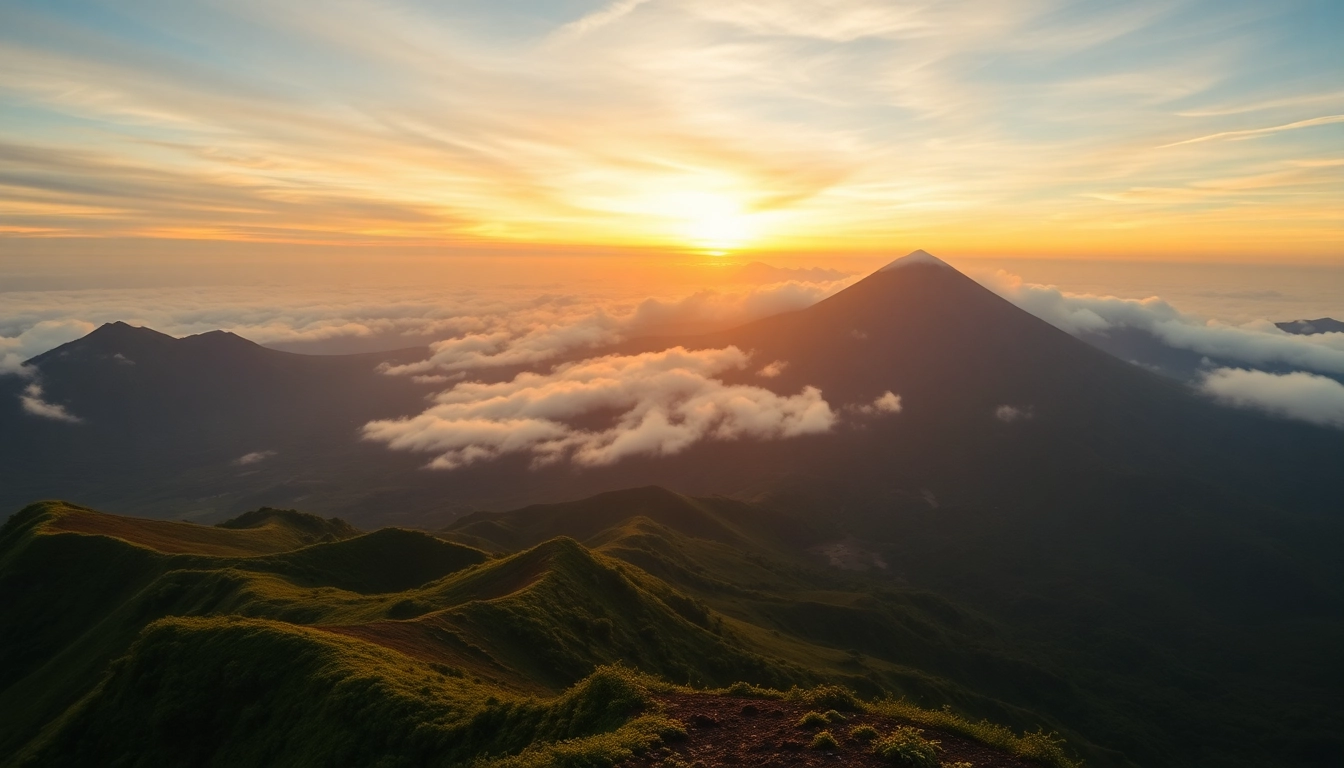
Understanding the Profound World of Hiking: An In-Depth Guide
Introduction to Hiking: Embracing Nature’s Adventure
Hiking is more than just walking in the outdoors; it is a journey that reconnects us with nature, promotes physical health, and fosters mental well-being. Whether perched on lush trails, rugged mountain paths, or serene countryside tracks, engaging in hiking offers a unique blend of adventure and tranquility. As global interest in outdoor activities grows, Indonesia emerges as a premier destination for hiking enthusiasts, thanks to its diverse landscapes, rich cultural heritage, and welcoming communities. To truly appreciate and maximize the benefits of this activity, understanding the fundamentals of hiking, its distinctions from similar pursuits, and how to prepare effectively are essential. If you’re ready to embark on your next outdoor journey, let’s explore everything you need to know about hiking in Indonesia and beyond.
For a comprehensive guide and to discover stunning hiking spots in Indonesia, visit hiking and start planning your adventure today.
Defining Hiking: Activities and Scope
At its core, hiking is a vigorous, long-distance walk performed along designated trails or footpaths, often through natural environments like forests, mountains, or rural landscapes. Unlike casual walking, hiking involves traversing varied terrains which may include steep inclines, rocky paths, mud, or uneven ground, demanding a certain level of endurance and preparation. The activity can be solitary or group-based, recreational or fitness-oriented, and ranges from short jaunts to multi-day expeditions.
The scope of hiking is broad. It encompasses leisure walks in urban parks, day hikes in national parks, and extended backpacking adventures covering remote wilderness areas. The activity’s primary goal is enjoyment of nature, physical exercise, and mental rejuvenation. In Indonesia, hiking frequently intertwines with cultural insights and scenic exploration, offering a holistic outdoor experience.
Historical Origins and the Rising Popularity in Indonesia
Historical Roots
The practice of hiking dates back centuries, rooted in European traditions of walking for pleasure and exploration during the eighteenth century’s burgeoning naturalist movements. Over time, it evolved into an organized recreational activity, with trails and national parks developed to facilitate outdoor pursuits. As societies became more urbanized, hiking emerged as a vital means to escape city life and reconnect with nature.
Indonesia’s Hiking Boom
Indonesia, with its sprawling archipelago, volcanic peaks, lush rainforests, and vibrant cultural tapestry, has become a hotspot for hiking enthusiasts. The country’s diverse topography includes renowned destinations like Mount Rinjani in Lombok, the Dieng Plateau in Central Java, and the lush trails of Bali’s mountains. The rising popularity is driven by increased domestic and international tourism, local government initiatives promoting eco-tourism, and the global trend towards health-conscious outdoor recreation.
Indonesian hikes are particularly appealing because they offer cultural immersion—visiting indigenous communities, exploring ancient temples, and experiencing vibrant local traditions—all set within breathtaking scenery.
Physical and Mental Health Advantages of Hiking
Physical Fitness Benefits
Hiking is a comprehensive, low-impact cardiovascular workout that boosts endurance, strengthens muscles, and enhances flexibility. It works multiple muscle groups, including the legs, core, and back, promoting muscular balance and stamina. Regular hiking can reduce risks of heart disease, improve lung capacity, and help manage weight. On average, a brisk hike can burn between 400 to 700 calories per hour, depending on terrain and weight carried.
Mental Wellness and Emotional Benefits
Beyond physical gains, hiking significantly contributes to mental health. Exposure to natural surroundings has been proven to reduce stress, anxiety, and depression. The meditative quality of walking amidst greenery fosters mindfulness, improves mood, and enhances overall emotional resilience. Achieving hiking goals, conquering challenging trails, and enjoying scenic vistas provide a sense of accomplishment and boost self-esteem.
Studies indicate that spending time outdoors can decrease cortisol levels—your body’s primary stress hormone—leading to increased feelings of relaxation and mental clarity. For many, hiking is a natural therapy that enhances cognitive function and creative thinking.
Preparing for Your Indonesian Hiking Adventure
Choosing the Right Trails and Destinations
Selecting appropriate trails depends on your fitness level, experience, and interests. Beginners might start with easier routes such as Bali’s Mount Batur sunrise trek or the scenic Teletubbies Hill in Java. For more seasoned hikers, Indonesia offers challenging peaks like Mount Rinjani or the active volcanoes in Sulawesi. When picking a trail, consider:
- Trail length and elevation gain
- Difficulty rating
- Accessibility and transportation options
- Cultural or environmental significance
- Availability of guided tours or permits
Research local conditions and seasonal weather patterns to avoid monsoon seasons or excessive heat, ensuring a safer and more enjoyable experience.
Essential Equipment and Gear for Beginners
Proper gear can make or break your hiking experience. Essential items include:
- Footwear: Supportive hiking boots with good grip
- Clothing: Moisture-wicking layers, weather-appropriate jackets, hat, and sunglasses
- Navigation tools: Map, compass, or GPS device
- Packed essentials: Water bottles or hydration packs, energy snacks, first aid kit, flashlight, and multi-tool
- Safety gear: Whistle, personal locator beacon (for remote areas), and insect repellent
Beginners should focus on lightweight, comfortable, and versatile gear, gradually upgrading as they gain experience.
Safety Tips to Consider Before Hiking
Ensuring safety is paramount. Before setting out:
- Inform someone about your route and expected return time
- Check weather forecasts and trail conditions
- Travel with a group or guided tour when possible
- Carry a fully charged communication device
- Stay on marked trails and respect local advisories
- Be aware of local wildlife and environmental hazards
Planning ahead minimizes risks and enhances enjoyment.
Executing Your Hiking Plan Effectively
Navigation Techniques and Trail Markers
Navigating Indonesian trails often involves interpreting environmental cues, trail markers, and GPS technology. Learn to read topographical maps and recognize natural features like distinctive trees, rivers, or rock formations. Carry a compass and know how to use it, especially in remote areas where signage might be scarce.
Layering Clothing for Climate and Conditions
Indonesia’s climate varies from tropical warmth to cooler mountain air. Layering helps adapt to changing conditions:
- Base layer: Moisture-wicking fabrics to keep sweat away
- Insulation layer: Fleece or down jackets for cooler temperatures
- Outer layer: Waterproof or windproof shells to protect against rain and wind
Adjust layers as needed to prevent overheating or chill.
Environmental Respect and Leave No Trace Principles
Protecting Indonesia’s pristine environments ensures future generations can enjoy these natural treasures. Follow Leave No Trace principles:
- Pack out all trash and waste
- Stay on designated trails to prevent erosion
- Respect wildlife and plant life
- Minimize campfire impacts and avoid damaging vegetation
- Share cultural respect with local communities and honor their traditions
Maximizing Experience and Performance
Recording and Sharing Your Hiking Memories
Documenting your adventures through photos, videos, and journals enhances your experience and inspires others. Use smartphones or specialized cameras to capture scenic vistas, wildlife, and memorable moments. Sharing on social media or dedicated hiking platforms can foster community engagement and motivate others to explore Indonesia’s trails.
Using Apps and Technology to Enhance Your Hike
Modern technology offers tools to improve safety and navigation. Popular hiking apps provide trail maps, real-time weather updates, and route tracking. Devices like GPS watches or smartphones with offline maps help you stay oriented. Always carry backup batteries or portable chargers for extended excursions.
Monitoring Health and Fitness Metrics During the Hike
Wearable health devices monitor heart rate, steps, elevation gain, and calorie expenditure. Analyzing these metrics helps tailor training plans for better performance and health outcomes. Hydration and pacing are critical; listen to your body and take breaks as needed.
Hiking in Indonesia: Unique Trails and Cultural Insights
Popular Hiking Spots Across Lombok and Beyond
Lombok offers some of Indonesia’s most breathtaking hiking experiences, such as:
- Mount Rinjani: Indonesia’s second-highest volcano, featuring hot springs, crater lakes, and panoramic views.
- Benang Stokel Waterfall: A scenic trek through lush rainforest culminating at beautiful waterfalls.
- Sendang Gile and Tiu Kelep Waterfalls in Mount Rinjani National Park: An accessible adventure for beginners and seasoned hikers alike.
Other famed areas include Bali’s Mount Batur, the caves and peaks of Sumatra, and the volcanic landscapes of Flores. Each destination combines natural beauty with cultural attractions, like local villages and temples.
Local Culture and Tips for Respectful Hiking
Indonesia’s diverse ethnic groups and traditions are woven into every trail. Engage respectfully:
- Encourage interactions with local communities, supporting eco-tourism initiatives
- Dress modestly, especially in rural or religious sites
- Learn basic phrases in local languages to foster goodwill
- Follow community guidelines and obtain permits when required
Seasonal Considerations and Best Times to Hike
Indonesia generally has two main seasons: dry and wet. The dry season (May to September) offers optimal hiking conditions, with less rain and clearer views. The wet season (October to April) can bring heavy rains, slippery trails, and increased risks of landslides. Always check local weather forecasts, trail conditions, and advisories before planning your hike.

